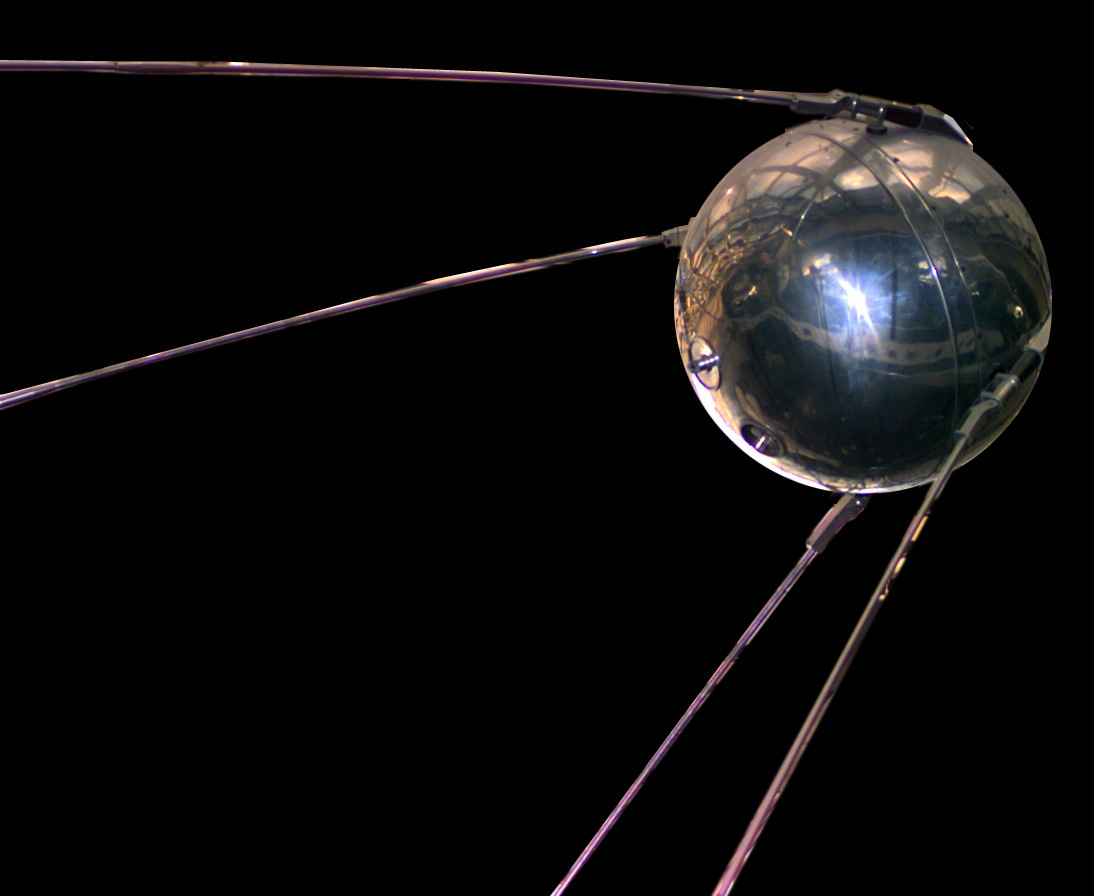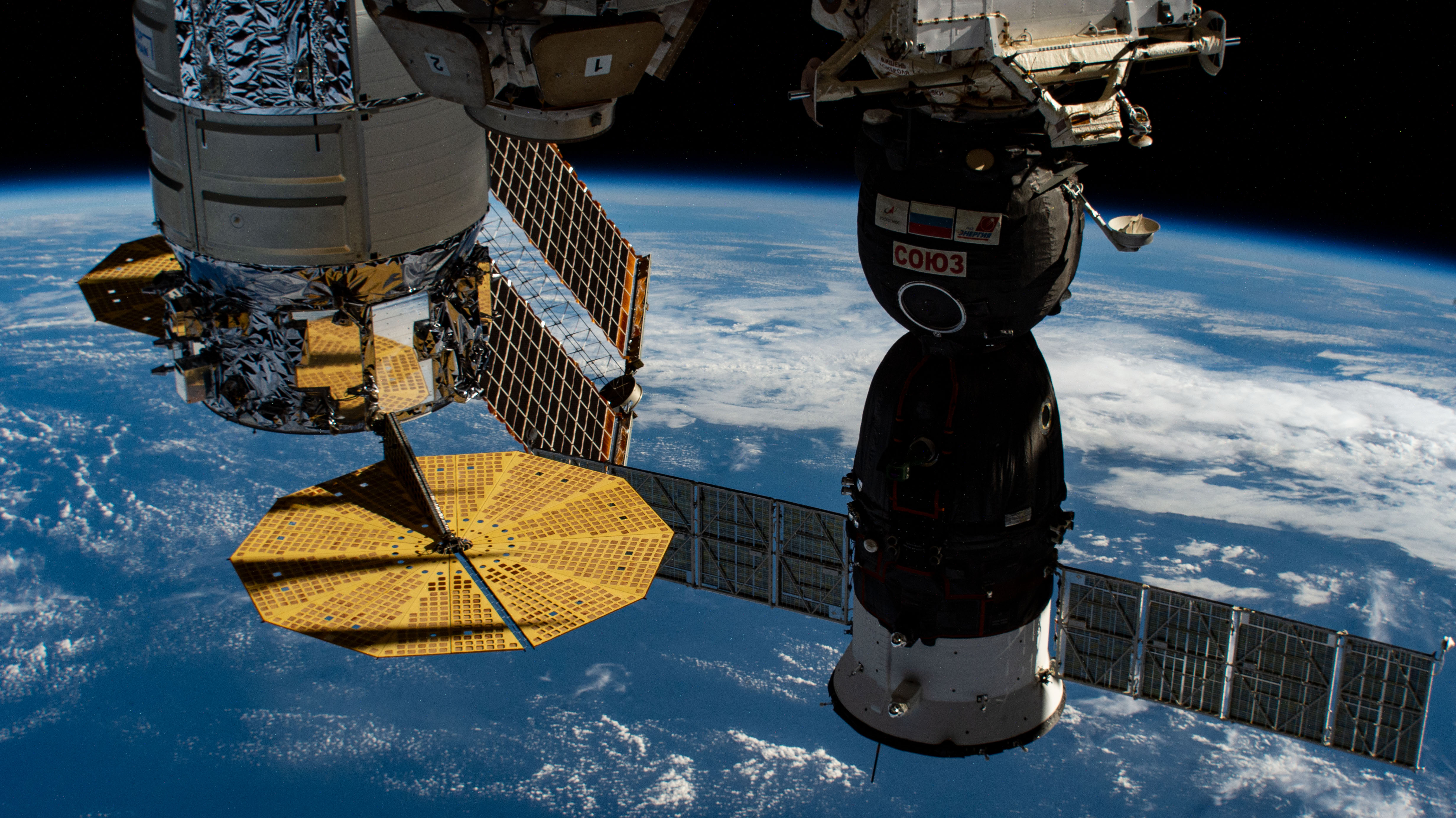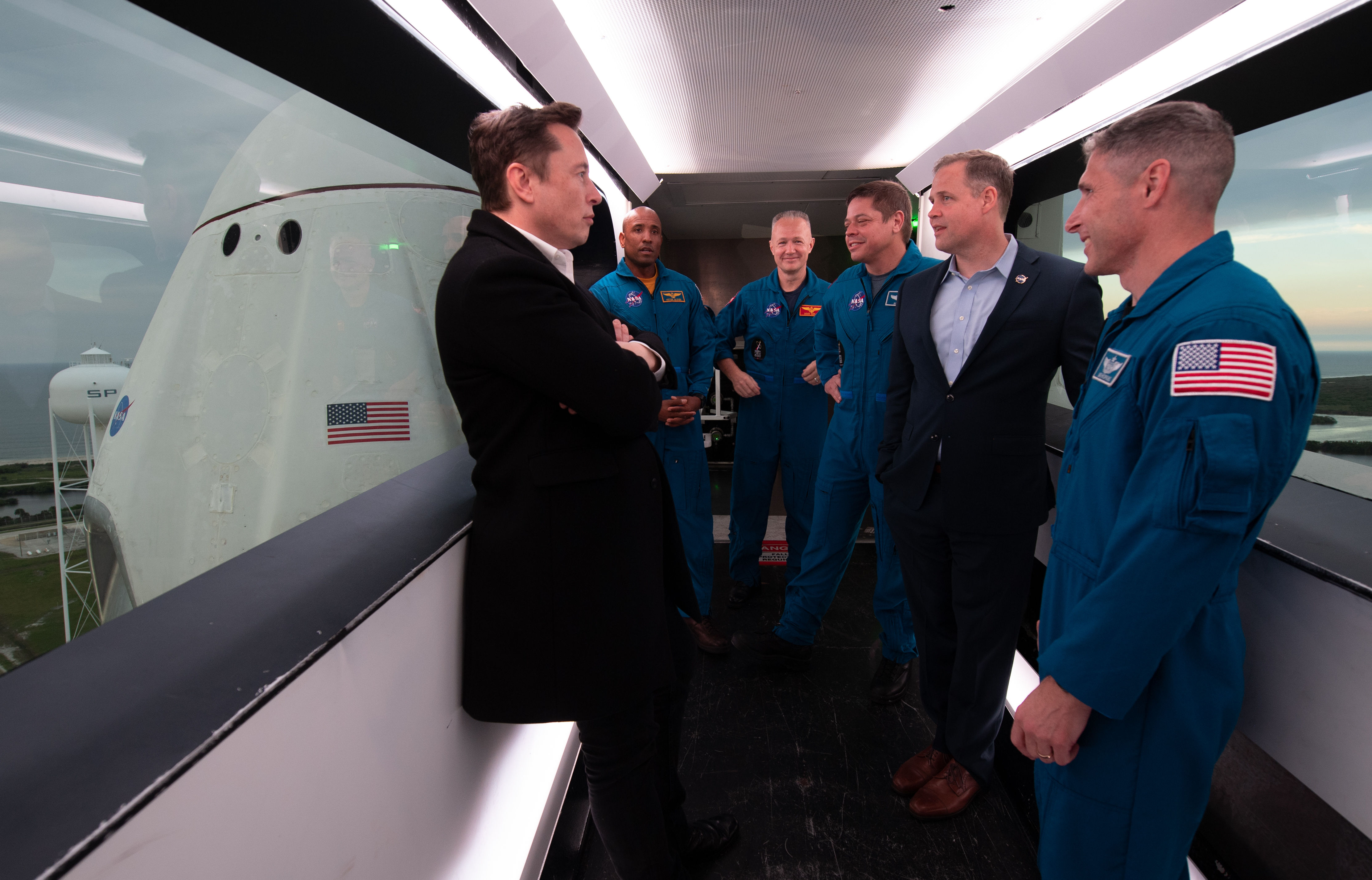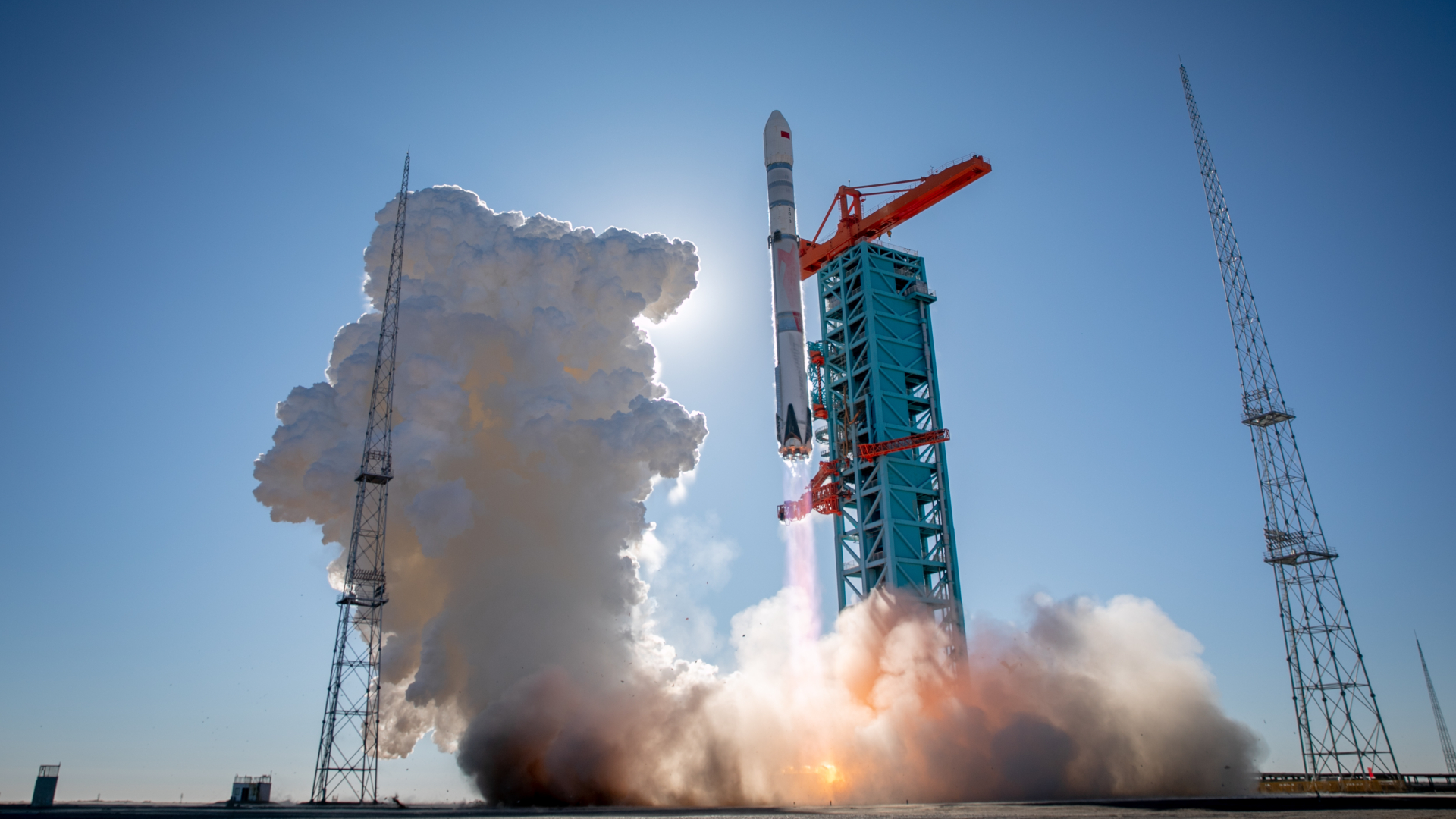From Yuri Gagarin's launch to today, human spaceflight has always been political

When cosmonaut Yuri Gagarin became the first human to fly in space, he also became an instant celebrity, a diplomatic icon of the Soviet Union around the world.
Gagarin blasted off Earth 60 years ago on Monday (April 12), kicking off the era of human spaceflight. Rooted in the Cold War, human spaceflight was, at the time, inherently about the perception of power and prestige — and it remains so today, although the nuances of international relationships at play have changed just as much as the technological ones.
"It's always been political," Teasel Muir-Harmony, a space historian and curator at the Smithsonian Institution's National Air and Space Museum, told Space.com of human spaceflight.
Related: Here's every spaceship that's ever carried an astronaut into orbit
That's in part because running the numbers doesn't really make the case for sending humans into orbit, Asif Siddiqi, a space historian at Fordham University in New York City, told Space.com. "Space, especially human spaceflight, is not a generator of anything," he said. "It's not going to make you more money. It's not scientific and technological — in other words, there are probably cheaper ways to do the kind of innovation that you want without having to do human spaceflight."
And yet, here we are, 60 years after Gagarin's flight, still all in on human spaceflight — so much so that for more than 20 years, there's never been a moment when every human being was living on the planet.
The details have changed, but the theme is the same as it was when Gagarin stepped back onto Earth's surface: prestige.
Breaking space news, the latest updates on rocket launches, skywatching events and more!
Cold War, hot rockets
But prestige needs an audience. In the 1950s, as Earth was still reeling from World War II, a wave of independence movements swept over colonized nations eager to establish their own political system and looking to the wider world for inspiration.
"I think we often focus on a competition between the Soviet Union and the United States without stepping back and seeing who they're competing for, or what they're competing for," Muir-Harmony said. "It wasn't just simply the finish line, it was this larger aim of advancing each respective geopolitical position." The U.S. and the Soviet Union each wanted allies.
And the war had widened the scope of how countries jostled among themselves: It was no longer a straightforward matter of military might; science was at the heart of power in a new way.
"Sometimes people refer to World War II as the physicists' war because of developments that originated in the United States to fight that war, like nuclear weapons or radar," Muir-Harmony said. "The introduction of nuclear weapons during World War II is really critical here because it also changed the way that countries wage war and psychological warfare became more important."
Even after the war ended, the psychology remained, and space was a subtler version of nuclear weapons — after all, the rockets were the same, all that varied was the payload. The vehicle Gagarin made his landmark flight on was designed to be able to carry either a human or military cameras, Siddiqi noted, adding that throughout the 1950s, "any kind of space activity was very much intertwined with military goals."
But despite the link between spaceflight and the military, space travel wasn't, strictly speaking, aggressive. "The space race sort of was an outlet for competition that didn't involve military activity," Wendy Whitman Cobb, a political scientist at the Air Force School of Advanced Air and Space Studies, told Space.com. "It sort of siphons off an energy that might otherwise be used to poor purposes on Earth."
Meanwhile, there was the United States, relatively unscathed at home, and the Soviet Union, still counting its dead citizens and lost cities. As competitions go, it should have been straightforward.
"The United States in the 1950s is very confident about the idea that they lead the world when it came to science and technology," Muir-Harmony said. "And it wasn't just domestic too, people around the world sort of had that impression, loosely."
Until Sputnik, that is.
Related: Sputnik 1, Earth's first artificial satellite in photos
Soviet firsts
The Soviet Union didn't expect the little satellite to make a splash; Muir-Harmony noted that the first coverage of Sputnik's launch in 1957 was technical and buried deep inside newspapers. It was only after the United States responded so strongly that the satellite hit the front pages.
And that too was a matter of prestige more than capability. "It wasn't the most advanced satellite, it really didn't do much beyond beep, but it was symbolic," Whitman Cobb said. "Most of the time in politics, symbolism is just as important as substance."
Even as the United States hustled to launch its (more capable, it would have you know) Explorer satellite, dynamics had shifted. "With Sputnik, it becomes a kind of reality that, 'Oh, this nation that we had dismissed as backwards and so forth was in fact, not only matching us, but exceeding us,'" Siddiqi said.
Neither country was inclined to stop at satellites, however. "Within the United States especially, it became clear really quickly — they thought that it was men and not machines that inspire the world and capture the imagination," Muir-Harmony said. "The expectation was that human spaceflight did a greater job in terms of capturing interest, and not just public interest within the country but around the world."
In the late 1940s and throughout the 1950s, both countries launched veritable menageries aboard rockets, although none both reached orbit and survived the journey before 1960's Soviet dogs Belka and Strelka. In the same year, John F. Kennedy won the presidency, taking office in January.
Astronauts on the world stage
Despite his legacy today, intertwined with the Apollo program he initiated, human spaceflight wasn't guaranteed under Kennedy. His science advisor questioned whether the prestige of the activity was worth the risk that it would evaporate if an astronaut was injured, Muir-Harmony said, and Kennedy himself considered a desalination project as a different approach to garnering international prestige.
It was Gagarin's flight on April 12, 1961 — followed within a week by the disastrous Bay of Pigs invasion of Cuba — that convinced Kennedy that it would have to be a human spaceflight to stand a chance of catching the world's admiration, she added.
Unlike Sputnik, when Gagarin launched the Soviet Union was prepared to make the most of a historic moment. "With Gagarin's flight, they were ready," Muir-Harmony said. "There was an expectation that this is going to be a big deal."
Gagarin's flight certainly was a big deal within the Soviet Union, which met the returning cosmonaut with a host of parades and celebrations. "I think that's a genuine moment, a deeply authentic moment of optimism for Soviet people," Siddiqi said. "It's a once-in-a-lifetime moment where the country which had suffered so much in World War II, had basically been devastated — over 25 million dead, over 1,000 cities destroyed — within 15 years was now at the forefront of science and technology, was something to be genuinely proud of."
And rightfully so, Siddiqi said. "Without necessarily defending the communist system, I think you can still appreciate the enormous efforts and creativity that went in achieving that first," he said. "It's unbelievable, and I think we forget how smart those guys were."
If you ask a Russian, they'll say Gagarin's flight notched the Soviets' victory in space, he said. After all, it would be nearly a month before the first American astronaut to fly in space, Alan Shepard, lifted off, and he didn't reach orbit. But perhaps there's a narrative for everyone here. Americans prefer to mark the decisive moment in the space race as Neil Armstrong's first steps on the moon, eight years later. Meanwhile, the rest of the world could see the two nations' activity as one trajectory of collective advancement, Siddiqi said.
All three narratives are true — or at least, they aren't false.
And as Apollo's aftermath unfurled, it changed the flavor of the politics of human spaceflight on the international stage, perhaps, but certainly didn't eliminate the politics altogether.
As President Richard Nixon steered the nation's relationship with the Soviet Union toward detente, spaceflight followed, most obviously with 1975's Apollo-Soyuz Test Project mission, the first joint endeavor in space between the U.S. and the Soviet Union. Three NASA astronauts launched from the U.S., two cosmonauts launched from the Soviet Union, the spacecraft met in space, and the men shared a microgravity handshake.
"The United States has nothing to prove on the political stage anymore, and so the next step is a collaborative project," Siddiqi said. "It didn't exactly become cooperation, but it became a sort of a kind of understanding that the old days are over."
It's perhaps the epitome of human spaceflight as born in the showmanship of geopolitics. "Cooperation is still possible even when states are competing against one another," Whitman Cobb said. "Apollo-Soyuz becomes part of that in demonstrating that we can pull back from the brink, we can have this sort of peaceful coexistence even while still competing."
Related: Apollo-Soyuz Test Project: 1st U.S.-Russian spaceflight in pictures
Shuttle and station
The political aspect would shift again in the U.S.'s next major space endeavor, the reusable space shuttle that NASA first flew in 1981; the Soviet Union pursued a similar vehicle in the 1980s as well. The shuttle was born of Nixon's desire to retain spaceflight as a diplomatic tool but to share the cost with other nations, Muir-Harmony said.
"With Apollo, you're limited to three seats, so it limited who they sent," she said. "Shuttle is much bigger and it would not only let the United States diversify the crews — so include women and minorities — but then also to send foreign astronauts."
Meanwhile, the Soviet Union built orbital outposts in the Salyut and Mir programs. That expertise became particularly attractive after the Soviet Union fell. Combining expensive old U.S. plans for a space station that never came to fruition with now-Russian expertise in the arena became a solution to several concerns irking the U.S.
"Once the Cold War ends, cooperation in space becomes a really important part of foreign policy with Russia," Whitman Cobb said. "It becomes a way for us to sustain their workforce, their scientists, so that they're not going off and working for people we don't want them to be working for." The space station also kept those scientists focused on peaceful technology, rather than weapons, she noted. "Space can support other foreign policy objectives, can be a stepping-stone toward further engagement."
In the case of the International Space Station, it was a recipe for success. "Both countries put their sort of eggs in the ISS basket, and eventually, by the early 2000s, it is the core of human spaceflight globally, which is quite amazing and surprising," Siddiqi said.
In the meantime, China had become the third nation capable of launching its own astronauts with the 2003 flight of astronaut Yang Liwei. Chinese human spaceflight is independent of the International Space Station program, and while China last launched astronauts in 2016, the nation intends to launch the first module of a new space station this year along with the outpost's first crew.
But the space station's luster began to fade in 2011, when NASA ended its space shuttle program, giving into ongoing issues with the spacecraft (brought to light by the fatal Columbia shuttle disaster of 2003). The agency retired its three remaining spaceworthy shuttles — Atlantis, Discovery and Endeavour — which now sit in museums across the U.S.. Beginning in 2011, all astronauts bound for the orbiting laboratory had to hitch a ride with the Russians aboard their workhorse Soyuz capsules, giving Russia not simply prestige, but also power.
"The Russians are the only nation to be able to regularly deliver humans to space and they do it regularly, without accident," Siddiqi said. "It's quite impressive, but it also means that the United States is in a position that we could never foreseen, which is that the U.S. is dependent on Russia, deeply dependent, so Russia has a lot of leverage over America during this period."
Companies enter the scene
In May 2020, the political landscape of human spaceflight shifted again when the private spaceflight company SpaceX successfully completed its first crewed flight to the International Space Station for NASA. The company has since launched a second crewed flight, with a third set to fly later this month.
"I think commercial spaceflight introduces a new tricky element," Muir-Harmony said. She emphasized that NASA has always relied on commercial partners — 90% of the people who worked on Apollo worked for companies, not NASA directly. But NASA designed and owned and flew those vehicles, and that's no longer the case with SpaceX or Boeing, which is also working under a NASA contract to ferry astronauts to the space station.
"If the United States is outsourcing a lot of the elements of the mission, is the credit going to go to the United States or is it going to go to something like SpaceX?" Muir-Harmony wondered. "If human spaceflight at this point has primarily been funded for political reasons, then there's a question of whether or not it serves American political interests to pay SpaceX to do it," she added, while acknowledging nonpolitical motivations to launch humans to orbit.
Siddiqi noted that although NASA is paying SpaceX for flights, that incentive isn't enough to explain Elon Musk's decision to found the company and steer it toward human spaceflight. And there are cheaper ways to develop the same technological innovations. That points to the same sort of qualitative, relational reasons that have driven human spaceflight all along.
"He's doing it for something else and that something else is intangible," Siddiqi said. "He thinks it's cool, or it's awesome or whatever — these words that are hard to pin a dollar amount on."
Companies can also fly missions completely independently of NASA. SpaceX's first crewed, non-NASA flight is expected to fly later this year. Dubbed Inspiration4, the mission will carry billionaire Jared Isaacman, cancer survivor and physician assistant Hayley Arceneaux, Lockheed Martin employee and U.S. Air Force veteran Christopher Sembroski and geologist Sian Proctor. The mission could launch as early as Sept. 15.
Inspiration4, which will not visit the International Space Station, is meant to represent the values of leadership, hope, generosity and prosperity and in part raised money for St. Jude Children's Research Hospital, which cares for children with cancer. (Of course healthcare, like human spaceflight, is also governed by politics.)
In addition to being a human spaceflight player on its own, SpaceX also interacts with nations. Commercial human spaceflight may also further widen the scope of nations sending astronauts to space, even if only the U.S., Russia and China retain domestic launch programs.
"As SpaceX continues to demonstrate its capabilities and its potential, some other states might find it helpful to buy a seat or a whole mission on one of their launches and sort of make this statement," Whitman Cobb said. "I don't know if that would be necessarily as prestigious on a global stage as doing it yourself."
A new politics of human spaceflight
Even as the details vary, six decades after Gagarin made history, humans still take to microgravity for reasons bound up in Earthly concerns, and there's no reason to expect that will change any time soon.
Think instead of an expansion and complication of the human spaceflight arena from two players, the Soviet Union and the United States, to four, with the additions of China and SpaceX — and more to come. "Spaceflight is very much still tied to global image-making and soft power," Siddiqi said.
Russia's political power in spaceflight may be changing as well, he noted, given the program's challenging circumstances. "It's a good, instructive tale on how something can be really strong and powerful at one moment and decades later it can just collapse," Siddiqi said of the contrast between Soviet spaceflight in 1961 and the Russian program today.
But Russia can't be ignored, even as Congress worries about China's rising space power. "Certainly, they're not the space power that they once were but that doesn't mean they're not a space power at all," Whitman Cobb said of Russia. "They still have ambitions in space, and I think we ignore that to our detriment."
In recent years, Russia's space agency Roscosmos has embraced joint robotic missions to Mars with Europe and China, and this year began discussions with China to cooperate on a lunar base.
Recent reports evaluating security threats in space underscore the ways Russia may turn aggressive in orbit, but even the collaborative human spaceflight model that the International Space Station has upheld may be in peril as the aging facility eventually faces its end. "My guess is that there'll be a slow divergence of the relationship," Siddiqi said of ties between the U.S. and Russia.
And expect the prestige of human spaceflight to hold sway domestically as well. Take NASA's Artemis program to land astronauts on the moon, for example. "When we talk about exploring the moon again, a lot of that has to do with, I think, domestic politics and the way that America and Americans think about themselves," Muir-Harmony said.
"It seems like it's less aimed at the international public and more about domestic public American identity, the sense of what America does."
Email Meghan Bartels at mbartels@space.com or follow her on Twitter @meghanbartels. Follow us on Twitter @Spacedotcom and on Facebook.

Meghan is a senior writer at Space.com and has more than five years' experience as a science journalist based in New York City. She joined Space.com in July 2018, with previous writing published in outlets including Newsweek and Audubon. Meghan earned an MA in science journalism from New York University and a BA in classics from Georgetown University, and in her free time she enjoys reading and visiting museums. Follow her on Twitter at @meghanbartels.




